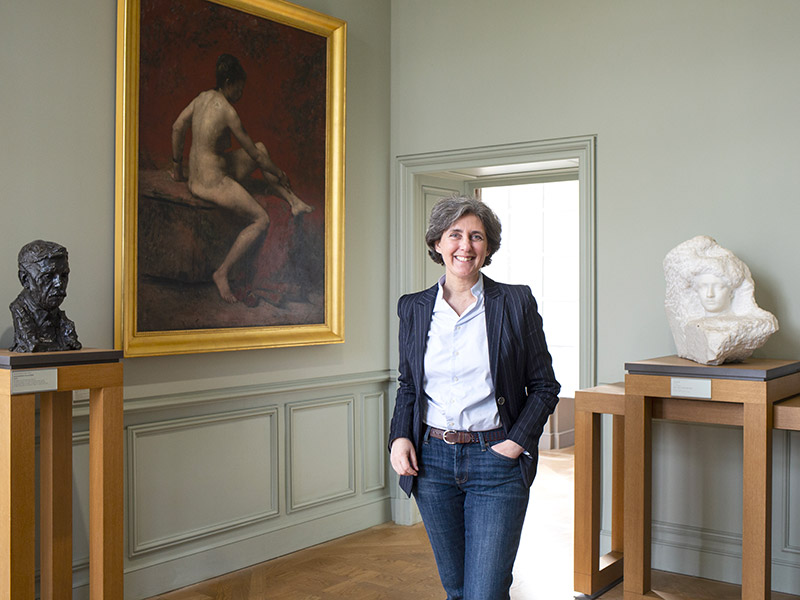Paris. It will be Shanghai and not Shenzhen. A Rodin “museum” project in the southern Chinese city had been under discussion since 2017, but it fell through due to local politics, explains Amélie Simier, the director of the Rodin Museum, who has just been reappointed. After Covid, the project started again on new bases in Shanghai and this time it was successful. “We let the private collector who owns a set of around forty fonts negotiate alone with the different parties,” she specifies. This collector will occupy the French pavilion at the 2010 World Expo for a renewable period of five years. The place will be called the “Rodin Art Center,” not the “museum,” because in China the term “museum” refers to ancient Chinese art. The exact date of the inauguration has not yet been set—Emmanuel Macron may make another trip to China, thus providing a nice sounding board for the event if the opening is simultaneous.
“It’s a very different model from that of the Centre Pompidou,” emphasizes the director. And for good reason, the museum has a considerable asset: it can manufacture old works. This privilege is due to Auguste Rodin (1840-1917) who bequeathed to the State, shortly before his death, all his works, the molds and the copyright, entrusting the public authorities with the task of making his work shine throughout the world.
A good calculation since around sixty museums in the world today have pieces by the sculptor, as well as an unknown number of private collectors. “who often have the vocation to open a place when they have a substantial set”, Amélie Simier points out. Starting with Jules Mastbaum, who bequeathed his collection to the City of Philadelphia (Pennsylvania), which opened a museum in 1929. A good part of these works are posthumous casts made by the Coubertin and Susse foundries and purchased from the Parisian museum. But not all projects come to fruition, for example, in January 2023 in the Canaries, the one that was supported by the public.
A master asset: the sale of bronzes
It is this windfall that allows the Musée Rodin to be one hundred percent self-financing, an exception in the French museum landscape. No less than 70 to 75% of revenue (around €8 million) is provided by ticket sales, private events and the shop, with the balance coming from the sale of cast iron. It was also the sale of cast iron that enabled the museum to overcome the health crisis, which caused it to have an operating deficit of €8.5 million. It was able to benefit from a little help from Roselyne Bachelot, then Minister of Culture, who was very attached to the museum, but most of the extraordinary revenue came from the sale of bronzes.
Problem: Rodin’s “Mona Lisas” are The Thinker And The kiss have exhausted their drawing rights (limited to 12 copies) and there are only four possible print runs left of the Gates of Hell. We must therefore bring out new icons, such as The Walking Man. This is where Cyril Duchêne, the museum’s communications strategist, comes in, managing the “Rodin” brand as a large group would. It is his job to create desire for certain sculptures. For example, to increase the interest of potential buyers of the Doorhe suggested creating a “Welcome to Hell” evening which took place last year at the museum the day before the Day of the Dead (900 participants all the same).
The complementarity between the sale of bronzes abroad and the museum’s main activity is not only financial. The museum seeks to attract foreign tourists, starting with the Chinese, who only make up 2% of visitors. And as for the Americans who represent the bulk of the troops, what could be better than a museum in the target countries to make their nationals want to come and see the parent company? Because attendance is the museum’s compass. Ticket and shop revenues depend on it. But the equation is complex: it is necessary to increase the number of foreign tourists (70% of visitors) while attracting Parisians. However, nearly 38% of local visitors do not pay (under 26, etc.). Amélie Simier has given up on “blockbuster” exhibitions, which are of little use to foreign tourists and are increasingly expensive; she prefers to organize only one thematic exhibition per year and leave room for the rest of the year for a (very well done) workshop for children.
To thank Rodin for having given up his rights and to keep the sculptor’s flame alive, Amélie Simier takes her entire team, every November 17 (the anniversary of his death) to the artist’s tomb in Meudon (Hauts-de-Seine). By next November, she will probably go to Shanghai.







